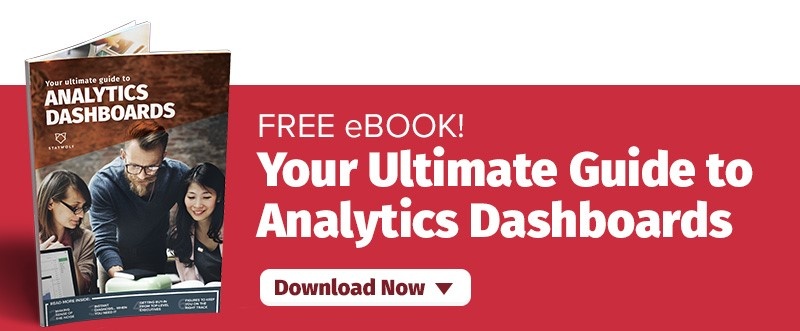Say goodbye to silos: how to use a marketing dashboard to join the digital dots
Put your hand up if this is a familiar scenario: let’s say you work for an insurance company and a customer gets in touch to buy a policy for their car. Your company has a pension unit and this customer has a pension with you. All well and good, right?
If this person is speaking to an agent in your company’s motor insurance unit, they would expect your company to have their details. They don’t want to be asked, “do you have any other policies with us?” Or worse, they don’t want the motor insurance seller to try and upsell them to a pension they already have.
That wouldn’t be a good customer experience – and it would be damaging for your brand. No customer wants to feel like a number in a sea of random faces.
So why do we accept the same sort of experience from our data analytics? More than 80 percent of marketers find that data silos prevent them from having a comprehensive view of campaigns and customers across channels.
The study makes for pretty startling reading. Without that comprehensive view of campaigns and customers, how can you accurately report on your work and finetune it for better results?
Data silos represent that same problem to marketers – and you absolutely don’t want to give your customer the impression that you don’t value them.
It’s not just Big Data
Big Data has been the buzzword in analytics for the last couple of years and it has undoubted value for marketing analytics. But Pelin Thorowood, a data marketing expert, said that, “there’s all this talk about Big Data, and of course, we connect to the Big Data sources, but there is so much more interesting information to be gleaned from small data if you could only connect the dots. But the reality of the situation is there’s still a lot of small data silos that many companies are living in.
“So, connecting the dots between these small data points still provides a tremendous amount of value, and that overlay some of the big potential data on top of it. I think that’s where the value is. You can’t just jump into the Big Data if you haven’t solved the small data problems, which many […] have not.”
There are entire areas like predictive maintenance where analysing big data can show industrial engineers when machinery needs servicing as it is in danger of breaking down. These developments are even making their way into the area of human resources.
Case Study: Asheville, North Carolina, USA
Jonathan Feldman is the Chief Information Officer of Asheville in North Carolina. Asheville is a city of around 450,000 in population and Feldman oversees all the IT for the city. His transport department came up with the idea of showing citizens of the city the amount of free parking spaces in the city’s car parks in real time.
The car parks already had electronic signs outside but that wasn’t much use to someone who wasn’t directly outside the car park. They wanted to show the information in an app for people at home who were thinking about a trip into the city.
It seems like a pretty simple solution, right? Except the manufacturers of the electronic sign told Feldman’s team that it couldn’t be done. They said that the data could not be provided in any format except a PDF report.
Feldman explains: “Data does not mean a PDF report. Data… means machine readable, tabular data. There was no API on this system that would let us easily grab the data. So, one of our enterprising analysts started monitoring the SQL backend and the file system for changes. He eventually figured out where the data was being stored and how we could store it elsewhere and make it available to others.
“Because we did this, we could create a website to show current garage availability, and others in our community were able to create a nifty Web app based on that data – one that also shows historical data – for the public.”
Marketing silos
Marketing’s core purpose is to help sales. So, that means helping the sales team as well as improving actual sales.
If you are marketing the company on social media, then the data from that should be available to people across the entirety of your company. Likewise, your CRM should integrate cross-silo/channel.
The reporting software you use should present data to other teams in your company to allow for joined-up thinking across the board. It should let you collate valuable data from all your sources – whether that’s social media data or information from your website, and bring it all together in a manner that is accessible to people in different departments across your organisation.
We've already spoken about the area of predictive maintenance - where you can forecast whether a machine will break down or not. Well a digital marketing dashboard does much the same thing for your marketing efforts - it allows you to see where your efforts are failing - as well as where you are succeeding.
The study we referenced at the start of this blog also found that 87 percent of marketers said data was the most underutilised asset in their organisation.
If you resolve that issue now, not only will it lead to better processes within your company, it’ll give you a head-start on your competition.
Do you want to join the dots across all channels in your marketing?
Statwolf’s digital marketing dashboard gives you the tools to gather your valuable data from all your sources and visualises it with ease so it’s accessible to every department in your organisation.
Get in touch today to see how we can help you increase the ROI of your marketing efforts with a digital marketing dashboard. Feel free to check out our solutions for digital marketers too.
Want to know more? Download our free eBook 'Your Ultimate Guide to Analytics Dashboards'.



